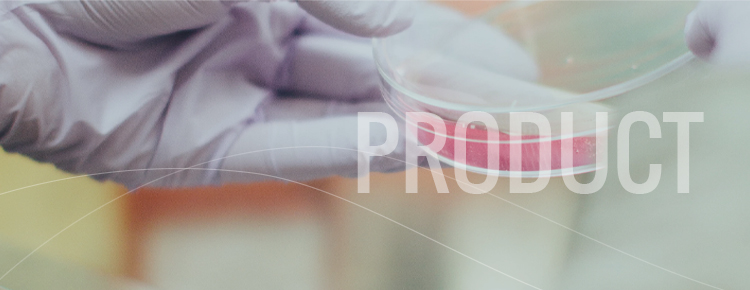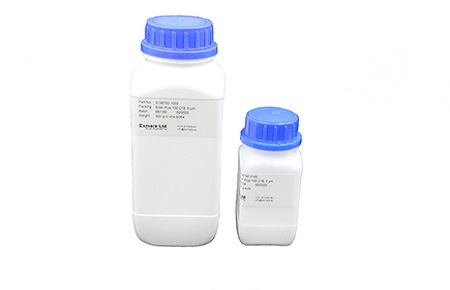

產(chǎn)品詳情:
Pore Size: 145 (+/-5) ?,
Pore Volume: 0.68 ml/g,
Surface Area: 186 m2/g
Particle Sizes: 5 μm
Phases: Silica, C8, CN, C18 and Quattro.
The Avanti BDS range was developed to meet the need for a range of base deactivated reversed phases based on a Type B silica which are less retentive than the standard 80 and 100 ranges and provide a closer match to current established commercial BDS 120 - 150? media. C18, C8 and CN phases are available in industry standard 3 and 5 μm particle sizes and are fully end capped.
Pore Size: 145 (+/-5) ?,
Pore Volume: 0.68 ml/g,
Surface Area: 186 m2/g
Particle sizes: Available in 1.5, 3, 5 and 10 particle sizes.
Phases: Silica, C8, CN, C18 and Quattro.
Avanti BDS Quattro.
----- The Ultimate Base Deactivated Polar Embedded Phase -----
A polar embedded phase that gives excellent peak shape and low retention for difficult bases at pH 7. Acids, bases and chelates are readily eluted as sharp peaks at pH 2 using TFA.
The Avanti BDS reversed phases (C8 and C18) offer a conventional approach to the separation of polar compounds by providing a base deactivated silica and a monomerically bonded linear alkyl functional group. This combination gives excellent performance at low pH but can show some slight tailing with difficult bases at neutral pH. The ultimate performance of these phases was constrained by the need to offer a close alternative to current BDS media.
Polar embedded phases have become a popular approach to improving peak shape with difficult compounds but with the added advantage of delivering alternative selectivity to standard alkyl phases. Rather than just improve the performance of the BDS C18 phase, we decided to incorporate the additional benefits offered by a polar embedded phases.
The objective of the new Avanti phase was to:
? maintain excellent low pH performance
? deliver excellent performance for difficult bases at pH 7
? offer alternative selectivity to current commercial phases
Avanti BDS ALKAM
Universal Polar Embedded Alkylamide
Exmere’s first polar embedded phase, the Avanti Quattro, gives excellent performance for all compounds at low pH and exceptional performance for bases at neutral pH. To compliment its performance envelope, we have produced an alkylamide phase based on our Avanti BDS.
The Alkam phase utilises our highly purified, base deactivated, 145? Avanti BDS which is carefully bonded with a stable alkyl amide phase of medium chainlength using decanoic acid. This results in a phase which shows reduced base retention compared with an alkyl bonded phase on the same silica. Peak shape for bases is also improved over the alkyl phase while the problem of tailing with acids which is sometimes encountered with amide phases, is overcome by the careful bonding procedure.
The attached selection of chromatograms shows the excellent peak shape of acids, bases and chelates at low pH and the maintenance of good peak shape for bases at neutral pH.
Phase stability appears good and it is even capable of being operated at pH 12 for short periods with minimal change as is shown in the attached chromatograms. Longer periods at this pH should be avoided. The phase resists phase collapse at low organic content and allows its use with 100% aqueous eluents.
Compared with the Avanti Quattro, the retention of bases is higher and there is a difference in selectivity e.g. at pH 7, Nortriptyline elutes before Doxepin on the Quattro but after on the Alkam.
Fluorine containing phases have attracted some interest due to the alternative selectivity they show compared with alkyl phases. In addition to hydrophobicity which they share with alkyl phases, they also show oleophobicity and increased interactions with fluorine containing species. Although these differences are not always pronounced, they can provide a useful alternative selectivity.
Avanti BDS FLUORO
Perfluroaryl phases have been marketed for some time but they have a reputation for instability due to the perfluoroaryl being a good leaving group in terms of SN2 reaction.
Our approach has been to use the more stable Tridecafluorooctyl ligand attached to our Avanti BDS and end capped. A noncapped version can be supplied if required.
The attached chromatograms show the increased retention of a perflurobenzene and the reduced retention of hydrocarbons when compared to the Avanti C8 BDS phase.
The BDS base also allows the phase to show good peak shape with bases under the usual low pH conditions but with longer retention than the C8 phase.
Due to the low surface energy of the packings, conventional slurry solvents can lead to aggregation. We have found dichloromethane to be a suitable slurry solvent for packing.